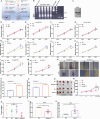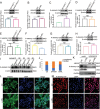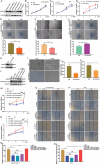A Novel tsRNA, m7G-3' tiRNA LysTTT, Promotes Bladder Cancer Malignancy Via Regulating ANXA2 Phosphorylation
- PMID: 38894581
- PMCID: PMC11336930
- DOI: 10.1002/advs.202400115
A Novel tsRNA, m7G-3' tiRNA LysTTT, Promotes Bladder Cancer Malignancy Via Regulating ANXA2 Phosphorylation
Abstract
Emerging evidence indicates that transfer RNA (tRNA)-derived small RNAs (tsRNAs), originated from tRNA with high abundance RNA modifications, play an important role in many complex physiological and pathological processes. However, the biological functions and regulatory mechanisms of modified tsRNAs in cancer remain poorly understood. Here, it is screened for and confirmed the presence of a novel m7G-modified tsRNA, m7G-3'-tiRNA LysTTT (mtiRL), in a variety of chemical carcinogenesis models by combining small RNA sequencing with an m7G small RNA-modified chip. Moreover, it is found that mtiRL, catalyzed by the tRNA m7G-modifying enzyme mettl1, promotes bladder cancer (BC) malignancy in vitro and in vivo. Mechanistically, mtiRL is found to specifically bind the oncoprotein Annexin A2 (ANXA2) to promote its Tyr24 phosphorylation by enhancing the interactions between ANXA2 and Yes proto-oncogene 1 (Yes1), leading to ANXA2 activation and increased p-ANXA2-Y24 nuclear localization in BC cells. Together, these findings define a critical role for mtiRL and suggest that targeting this novel m7G-modified tsRNA can be an efficient way for to treat BC.
Keywords: ANXA2; Bladder cancer; Yes1; m7G‐3′‐tiRNA LysTTT (mtiRL); tRNA‐derived fragments.
© 2024 The Author(s). Advanced Science published by Wiley‐VCH GmbH.
Conflict of interest statement
The authors declare no conflict of interest.
Figures







References
-
- El Yacoubi B., Bailly M., de Crécy‐Lagard V., Annu. Rev. Gen. 2012, 46, 69. - PubMed
MeSH terms
Substances
Grants and funding
LinkOut - more resources
Full Text Sources
Medical
Molecular Biology Databases
Miscellaneous
